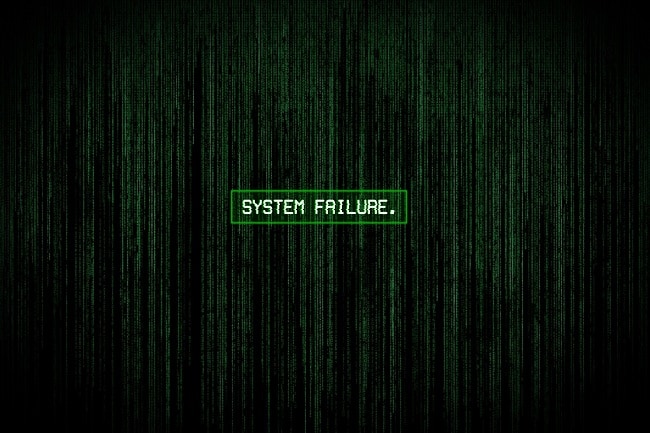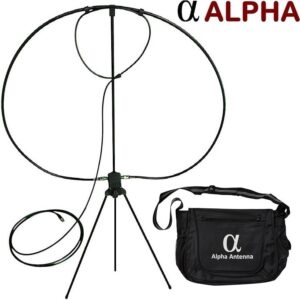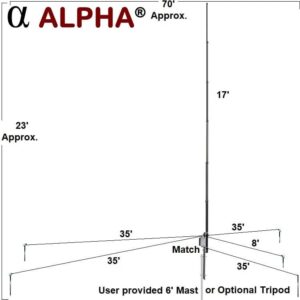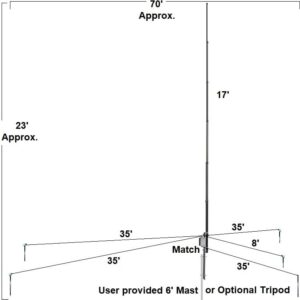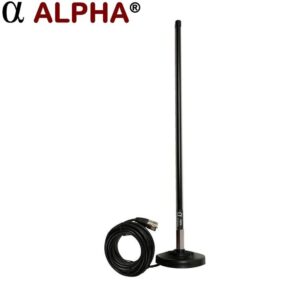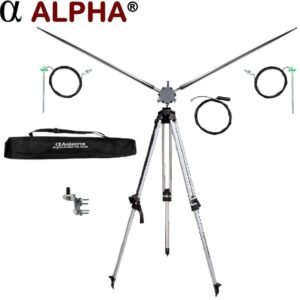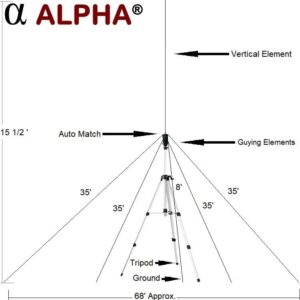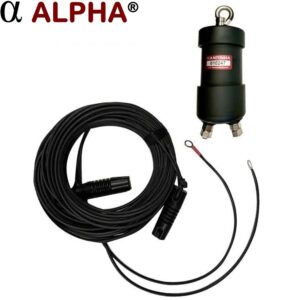Emergency Communications and the Amateur Radio Service
No matter the emergency, when all else fails amateur radio works. War, Natural Disasters, Power or Internet failure are all contributing reasons to be well-prepared. Federal Agencies have Disaster and Contingency planning, and those who support communications of the free world are Amateur Radio Operators.
United States Presidents support Amateur Radio by appointing 5 members whom the Senate confirms. This is what establishes the FCC. Who then provides the rules and regulations to maintain the fundamental purposes of an amateur radio service. eCFR :: 47 CFR Part 0 Subpart A – General)
READ MORE BELOW…
See our EmComm systems
…CONTINUED READING
The references for EmComm in support of the United States emergency communications infrastructure are listed here and each reference has been extracted below.
eCFR :: 47 CFR Part 97 — Amateur Radio Service
Recognition and enhancement of the value of the amateur service to the public as a voluntary noncommercial communication service. Particularly with respect to providing emergency communications. https://www.ecfr.gov/current/title-47/chapter-I/subchapter-D/part-97#p-97.1(a)
Amateur radio services. The amateur service, the amateur-satellite service and the radio amateur civil emergency service. https://www.ecfr.gov/current/title-47/chapter-I/subchapter-D/part-97#p-97.407(d)(4)
RACES (radio amateur civil emergency service). A radio service using amateur stations for civil defense communications during periods of local, regional or national civil emergencies. https://www.ecfr.gov/current/title-47/chapter-I/subchapter-D/part-97#p-97.3(a)(38)
At all times and on all frequencies, each control operator must give priority to stations providing emergency communications. Except to stations transmitting communications for training drills and tests in RACES. https://www.ecfr.gov/current/title-47/chapter-I/subchapter-D/part-97#p-97.101(c)
Transmissions necessary to exchange messages with a station in another FCC-regulated service while providing emergency communications; https://www.ecfr.gov/current/title-47/chapter-I/subchapter-D/part-97#p-97.111(a)(3)
Transmissions necessary to providing emergency communications; https://www.ecfr.gov/current/title-47/chapter-I/subchapter-D/part-97#p-97.111(b)(4)
A station licensee or station control operator may participate on behalf of an employer in an emergency preparedness or disaster readiness test or drill, limited to the duration and scope of such test or drill, and operational testing immediately prior to such test or drill. Tests or drills that are not government-sponsored are limited to a total time of one hour per week; except that no more than twice in any calendar year, they may be conducted for a period not to exceed 72 hours. https://www.ecfr.gov/current/title-47/chapter-I/subchapter-D/part-97#p-97.113(a)(3)(i)
Any station within the jurisdiction of any foreign government when transmitting emergency or disaster relief communications and any station within the jurisdiction of any foreign government. Whose administration has made arrangements with the United States to allow amateur stations to be used for transmitting international communications on behalf of third parties. No station shall transmit messages for a third party to any station within the jurisdiction of any foreign government whose administration has not made such an arrangement. This prohibition does not apply to a message for any third party who is eligible to be a control operator of the station. https://www.ecfr.gov/current/title-47/chapter-I/subchapter-D/part-97#p-97.115(a)(2)
In fact, EmComm is so important that it is addressed with its’ own section.
eCFR :: 47 CFR Part 97 Subpart E — Providing Emergency Communications
Subpart E – Providing Emergency Communications
§ 97.401 Operation during a disaster.
A station in, or within 92.6 km (50 nautical miles) of, Alaska may transmit emissions J3E and R3E on the channel at 5.1675 MHz (assigned frequency 5.1689 MHz) for emergency communications. The channel must be shared with stations licensed in the Alaska-Private Fixed Service. The transmitter power must not exceed 150 W PEP. A station in, or within 92.6 km of, Alaska may transmit communications for tests and training drills necessary to ensure the establishment, operation, and maintenance of emergency communication systems.
[71 FR 66465, Nov. 15, 2006]
§ 97.403 Safety of life and protection of property.
No provision of these rules prevents the use by an amateur station of any means of radiocommunication at its disposal to provide essential communication needs in connection with the immediate safety of human life and immediate protection of property when normal communication systems are not available.
§ 97.405 Station in distress.
(a) No provision of these rules prevents the use by an amateur station in distress of any means at its disposal to attract attention, make known its condition and location, and obtain assistance.
(b) No provision of these rules prevents the use by a station, in the exceptional circumstances described in paragraph (a) of this section, of any means of radiocommunications at its disposal to assist a station in distress.
§ 97.407 Radio amateur civil emergency service.
(a) No station may transmit in RACES unless it is an FCC-licensed primary, club, or military recreation station and it is certified by a civil defense organization as registered with that organization. No person may be the control operator of an amateur station transmitting in RACES unless that person holds an FCC-issued amateur operator license and is certified by a civil defense organization as enrolled in that organization.
(b) The frequency bands and segments and emissions authorized to the control operator are available to stations transmitting communications in RACES on a shared basis with the amateur service. In the event of an emergency which necessitates invoking the President’s War Emergency Powers under the provisions of section 706 of the Communications Act of 1934, as amended, 47 U.S.C. 606, amateur stations participating in RACES may only transmit on the frequency segments authorized pursuant to part 214 of this chapter.
(c) An amateur station registered with a civil defense organization may only communicate with the following stations upon authorization of the responsible civil defense official for the organization with which the amateur station is registered:
(1) An amateur station registered with the same or another civil defense organization; and
(2) A station in a service regulated by the FCC whenever such communication is authorized by the FCC.
(d) All communications transmitted in RACES must be specifically authorized by the civil defense organization for the area served. Only civil defense communications of the following types may be transmitted:
(1) Messages concerning impending or actual conditions jeopardizing the public safety, or affecting the national defense or security during periods of local, regional, or national civil emergencies;
(2) Messages directly concerning the immediate safety of life of individuals, the immediate protection of property, maintenance of law and order, alleviation of human suffering and need, and the combating of armed attack or sabotage;
(3) Messages directly concerning the accumulation and dissemination of public information or instructions to the civilian population essential to the activities of the civil defense organization or other authorized governmental or relief agencies; and
(4) Communications for RACES training drills and tests necessary to ensure the establishment and maintenance of orderly and efficient operation of the RACES as ordered by the responsible civil defense organization served. Such drills and tests may not exceed a total time of 1 hour per week. With the approval of the chief officer for emergency planning in the applicable State, Commonwealth, District or territory, however, such tests and drills may be conducted for a period not to exceed 72 hours no more than twice in any calendar year.
See what the FCC has to say about the Amateur Radio Service
Amateur Radio Service | Federal Communications Commission (fcc.gov)
Additional references
How will you communicate? (arrl.org) Basic Preparedness Plan (fema.gov)
Types of Emergency Communication Antennas
Stealthy Base antennas – Light Portable antennas – Covert MagLoop antennas

See more Technical Articles
-
VHF UHF HF Antenna (EmComm MagLoop)$399.00Rated 4.99 out of 5 based on 99 customer ratings
-
10-160M HF Base Antenna (ProMaster Sr)$749.00Rated 5.00 out of 5 based on 27 customer ratings
-
10-160M HF DX NVIS EMCOMM Antenna$1,000.00Rated 5.00 out of 5 based on 16 customer ratings
-
VHF UHF Mobile Military Antenna (MilCom MOTO)$200.00Rated 5.00 out of 5 based on 4 customer ratings
-
2-40M+440 HF VHF UHF Antenna (HexTenna Deluxe)$600.00Rated 5.00 out of 5 based on 32 customer ratings
-
10-160M Portable HF Antenna (MIL EmComm Enhanced)$699.00Rated 5.00 out of 5 based on 16 customer ratings
-
10-160M End-Fed & CB Antenna (JPole Sr)$219.00Rated 4.99 out of 5 based on 81 customer ratings

